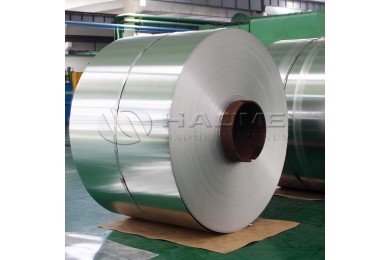

This alloy is an aluminum-based alloy in the "commercially pure" wrought family. With a minimum of 99.0% aluminum, it is the most heavily alloyed of the 1000 series. It is also the mechanically strongest alloy in the series, and is the only 1000-series alloy commonly used in rivets. At the same time, it keeps the benefits of being relatively lightly alloyed (compared to other series), such as high electrical conductivity, corrosion resistance, and workability. It can be strengthened by cold working, but not by heat treatment. HVAC, condenser, radiator, evaporator, heat shield, deep drawn applications, spinning, fan blades, nameplates and sheet metal work are typical applications.
Cold-working is the most common way to form aluminum 1100. A cold metalworking process is any metal shaping or forming process that takes place at or near room temperature. Aluminum 1100 can be shaped into many different products, including chemical equipment, railroad tank cars, fin stock, dials, name plates, cooking utensils, rivets, reflectors and sheet metal. The plumbing and lighting industries also use aluminum 1100, as do a wide variety of other industries.

Aluminum 1100 is among the softest aluminum alloys and therefore is not used for high-strength or high-pressure applications. Though it is often cold-worked, pure aluminum can be hot-worked as well, but more frequently, aluminum is shaped by spinning, stamping and drawing processes, none of which require the use of high heat. These processes produce aluminum shapes in the form of foil,plates, round bars or rods, sheets, strips, and wire. Aluminum 1100 can also be welded; resistance welding is possible, but it can be difficult and usually requires the attention of skilled welders. Aluminum 1100 is just one of several common aluminum alloys and is soft, low strength and, at 99% min aluminum, is the commercially pure aluminum. Copper, iron, magnesium, manganese, silicon, titanium, vanadium and zinc comprise the remaining elements. It cannot be hardened by heat treatment and is very formable.
|
Properties |
Conditions |
||
|
|
|
T (°C) |
Treatment |
|
Density (x1000 kg/m2) |
2.71 |
25 |
|
|
Poisson's Ratio |
0.33 |
25 |
|
|
Elastic Modulus (GPa) |
70-80 |
25 |
|
|
Tensile Strength (Mpa) |
110 |
25 |
H12 |
|
Yield Strength (Mpa) |
105 |
||
|
Elongation (%) |
12 |
||
|
Reduction in Area (%) |
|
||
|
Hardness (HB500) |
28 |
25 |
H12 |
|
Shear Strength (MPa) |
69 |
25 |
H12 |
|
Fatigue Strength |
41 |
25 |
H12 |